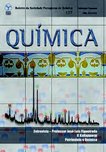 |
António João Cruz, "A Química aplicada ao estudo das obras de arte: o passado e os desafios do presente", Química – Boletim da Sociedade Portuguesa de Química, 137, 2015, pp. 43-52 |
|
⯇ | ⯈
|
| Resumo |
As primeiras aplicações da Química ao estudo das obras de arte surgiram em finais do século XVIII ligadas a contextos arqueológicos. Os estudos foram-se repetindo em grande número, mas de forma "Mais" ou menos isolada, e só em 1888 surgiu o primeiro laboratório num museu, ainda que interessado sobretudo em problemas arqueológicos. Verificaram-se alterações consideráveis depois da descoberta dos raios-X, em 1895, e do uso da radiografia para o estudo de pinturas e, a partir da década de 1920, com a criação de laboratórios em museus especialmente interessados na conservação das obras de arte, nos quais a investigação, além de recorrer a estes métodos, envolvia também a identificação de pigmentos através de testes microquímicos. Contudo, a situação só mudou de forma significativa a partir da década de 1970, em primeiro lugar com o aparecimento de equipamentos não invasivos e, depois, com o aparecimento de equipamentos portáteis que permitiam a análise não invasiva in situ. Os enormes desenvolvimentos tecnológicos e os importantes estudos que estes possibilitaram não resolveram, no entanto, determinados problemas que, no fundo, estão relacionados com a colaboração entre áreas diferentes com culturas diferentes. |
| Title |
Chemistry applied to the study of works of art: the past and the current challenges |
| Abstract |
The first applications of chemistry to the study of works of art emerged in the late eighteenth century in the context of archaeology. From then on such studies have been performed in a more or less isolated way and only in 1888 the first laboratory has been established in a museum, still with the emphasis on archaeological problems. Considerable changes occurred after the discovery of X-rays, in 1895, with the use of radiography to study paintings, and, after the 1920s, with the creation of laboratories in museums interested in the conservation of works of art in which research also involved the identification of pigments through micro-chemical tests. Nevertheless, the situation only changed significantly from the 1970s on, first with the appearance of non-invasive equipment and later with the advent of portable equipment that allows non-invasive in situ analysis. The huge technological developments and the important studies already performed, however have not solved certain problems that, in essence, are related to the collaboration between different areas with different cultures. |
| Editora |
URL |
| Ver |
PDF |
| |
Academia | Researchgate |
| Importar |
RIS | Endnote |
